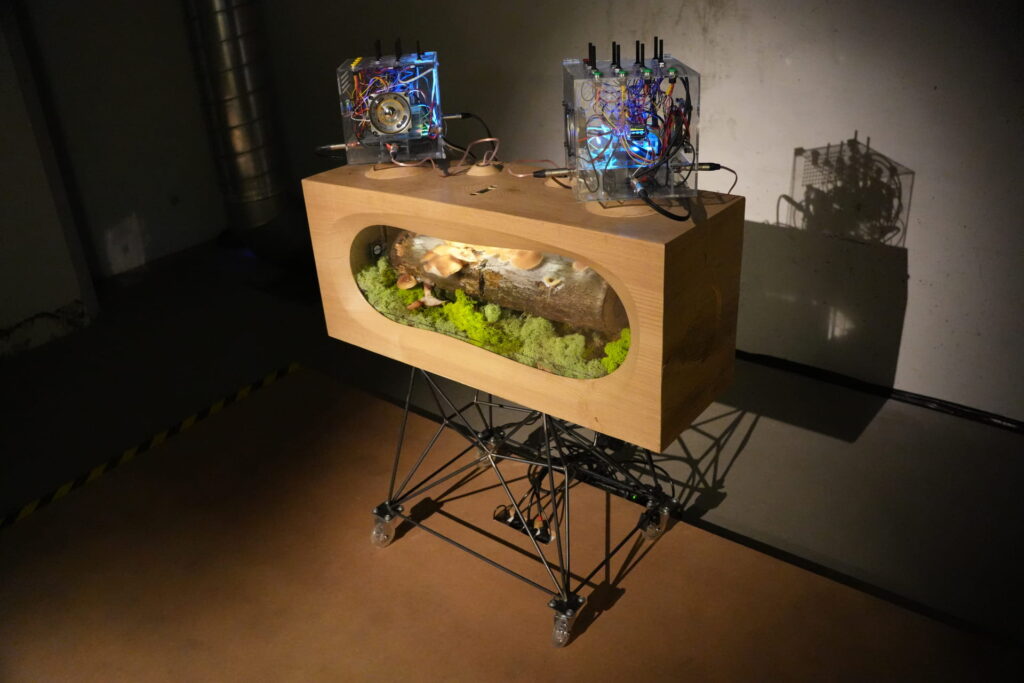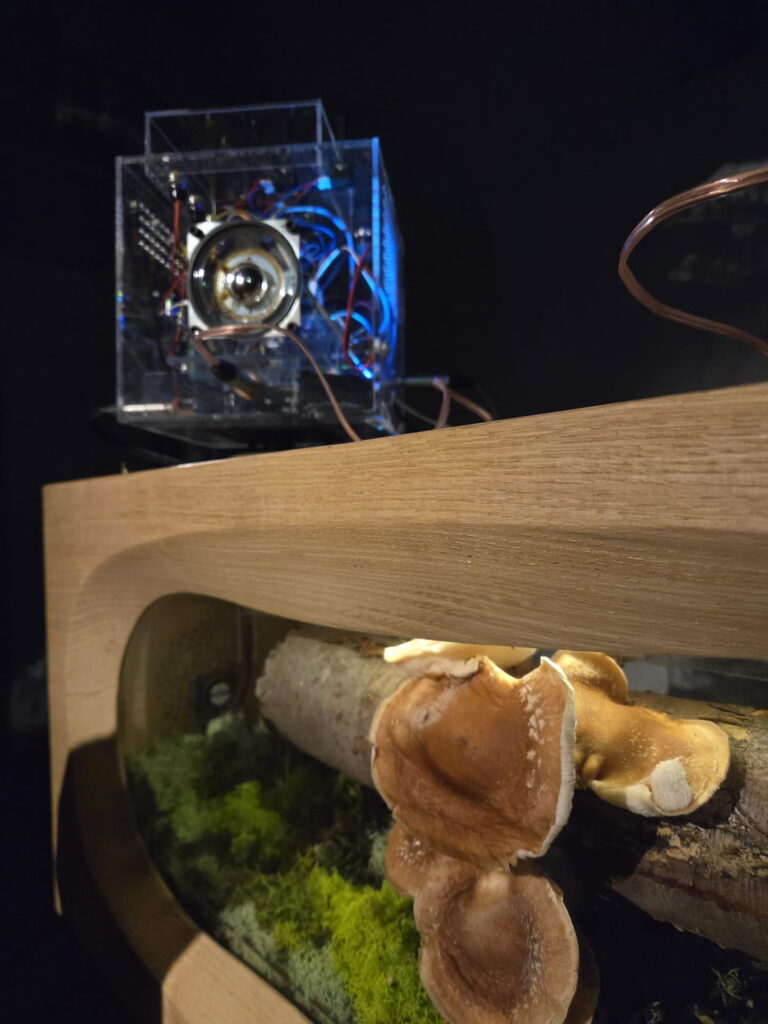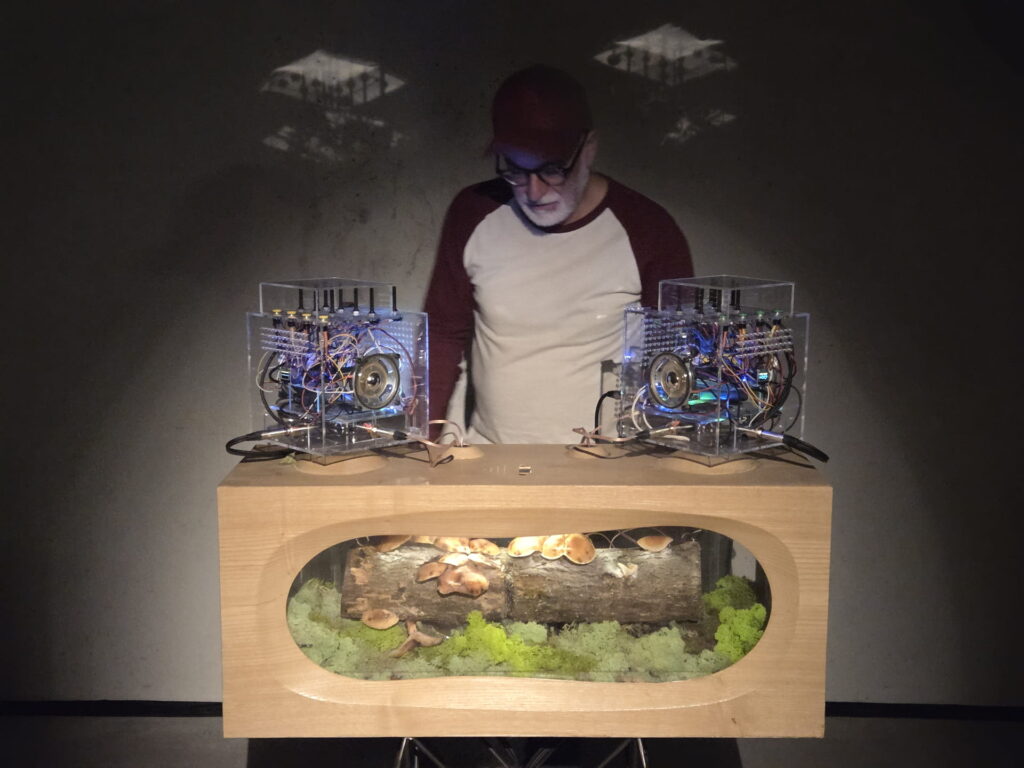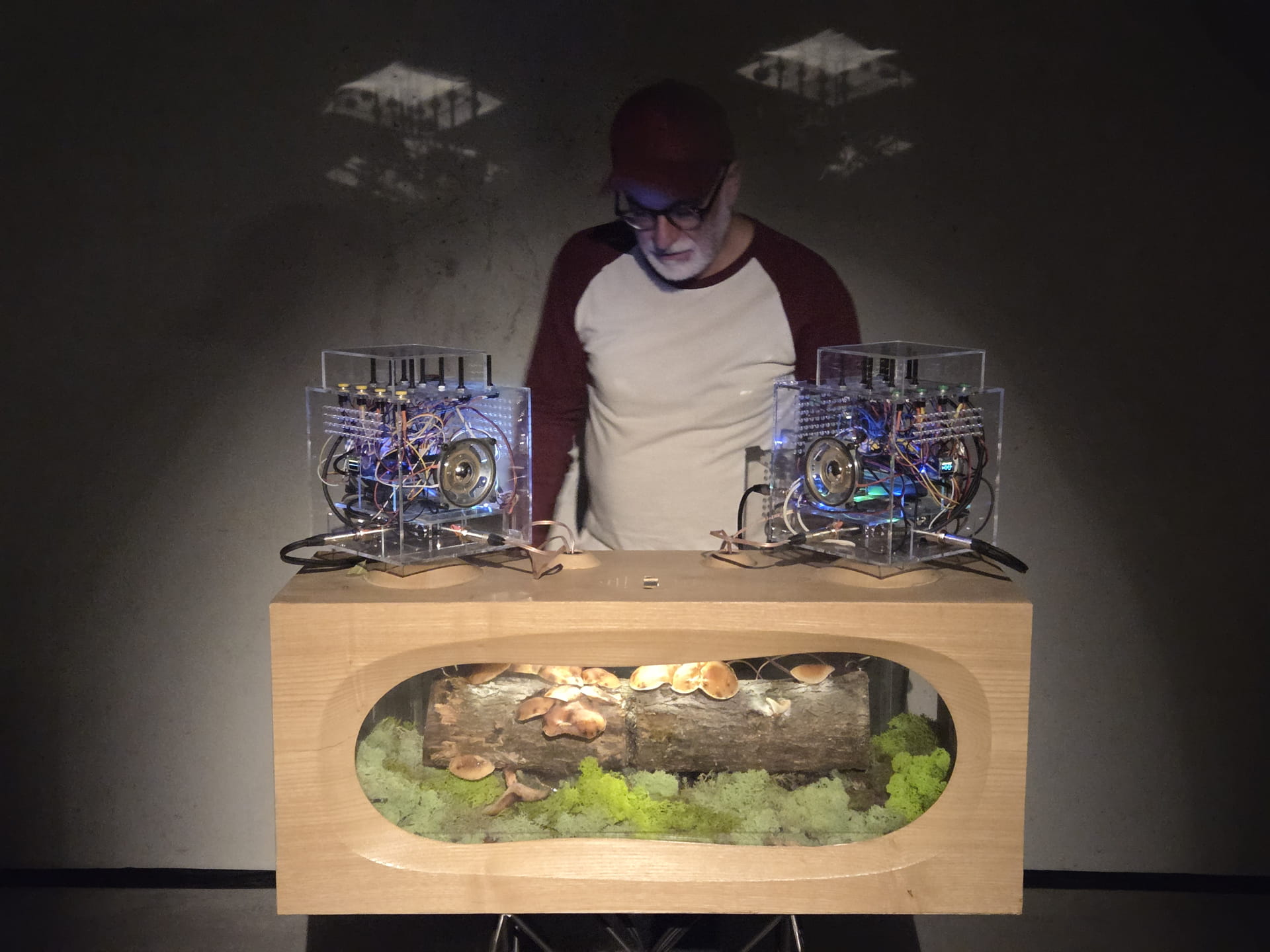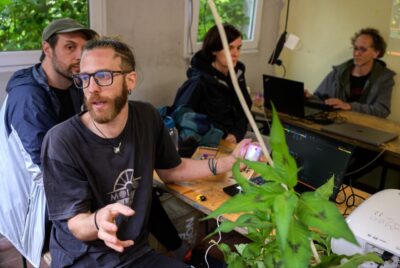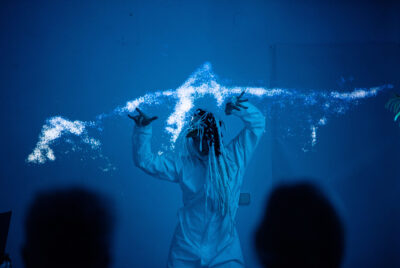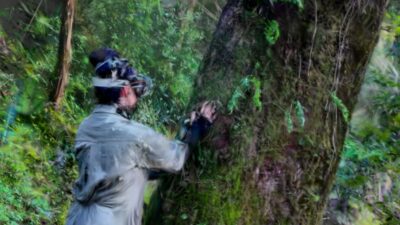An Interactive Sound Installation at Ars Electronica 2025
What if we could hear the metabolism of fungi? What if the invisible processes happening beneath our feet—in the soil, in the humus, in the underground networks of mycelium—could become music?
“Ritual Device for Fungal Humus” by Santiago Morilla, in collaboration with Joaku de Sotavento, B1tdreamer (Fernando Fernández), and Coco Moya (Menhir), invites us to experience exactly that. This interactive installation, presented at Ars Electronica 2025 in Linz, Austria, transforms a greenhouse for cultivating shiitake mushrooms into a living sound instrument where fungi and humans collaborate to create polyphonic soundscapes.
The Project: We Should All Be Musicians, Dancers, and Mushroom Cultivators
At the heart of this artistic project lies an urgent question: what does it mean to care for healthy soil in our current times? How can that care shape the way we cultivate, feed ourselves, and coexist with other forms of life?
The installation presents a sound device that functions as a greenhouse for domestic cultivation and biosonification of saprophytic fungi—those organisms that feed on decomposing organic matter. Fungi emerge as key indicators of biodiversity, revealing the essential role of interspecies collaboration in maintaining nutrient cycles and ecological processes.
The subtitle of the work captures its playful spirit: “We Should All Be Musicians, Dancers, and Mushroom Cultivators (At the Same Time)”.
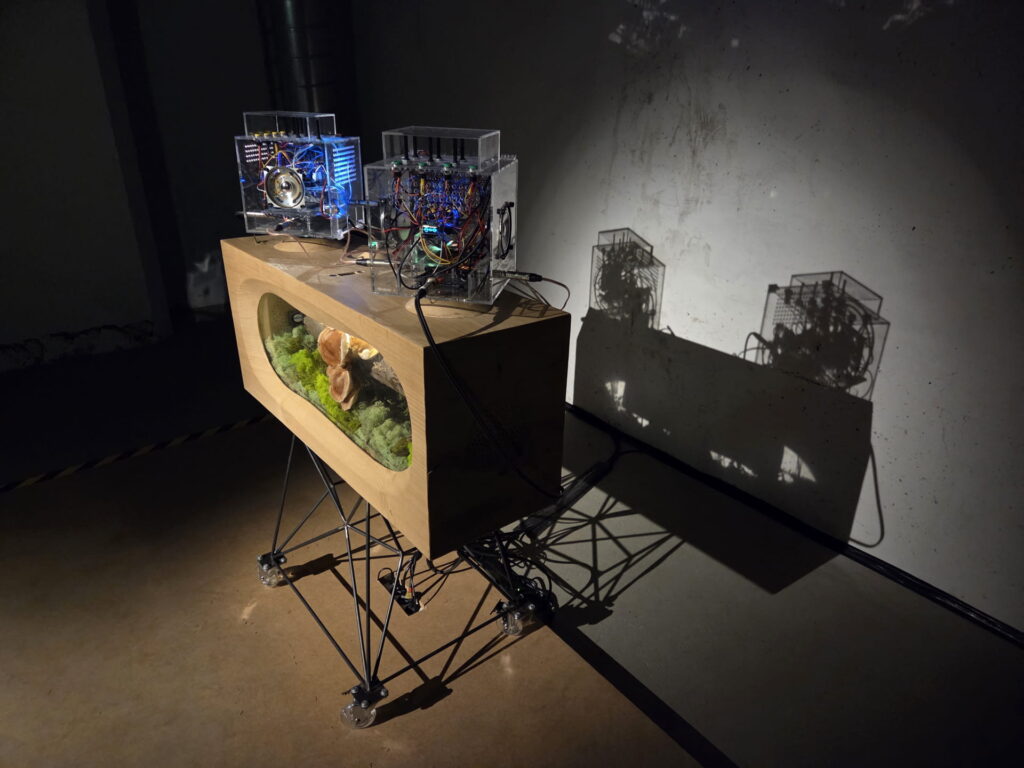
The Experience
The installation consists of two speaker units containing shiitake mushrooms growing on colonized logs. Electrodes detect the electrical activity within the fungi’s metabolism, translating these bioelectric signals into MIDI notes that activate vocal samples.
But the fungi aren’t the only performers. The floor around the installation is equipped with sensors that detect visitors’ footsteps. Each step becomes part of the composition, triggering higher-pitched sounds that interweave with the deeper tones generated by the mushrooms.
The result is an ever-evolving soundscape where humans and fungi perform together—a literal collaboration between species. Visitors become dancers, their movements adding bright melodic layers to the subterranean voices of the mycelium.
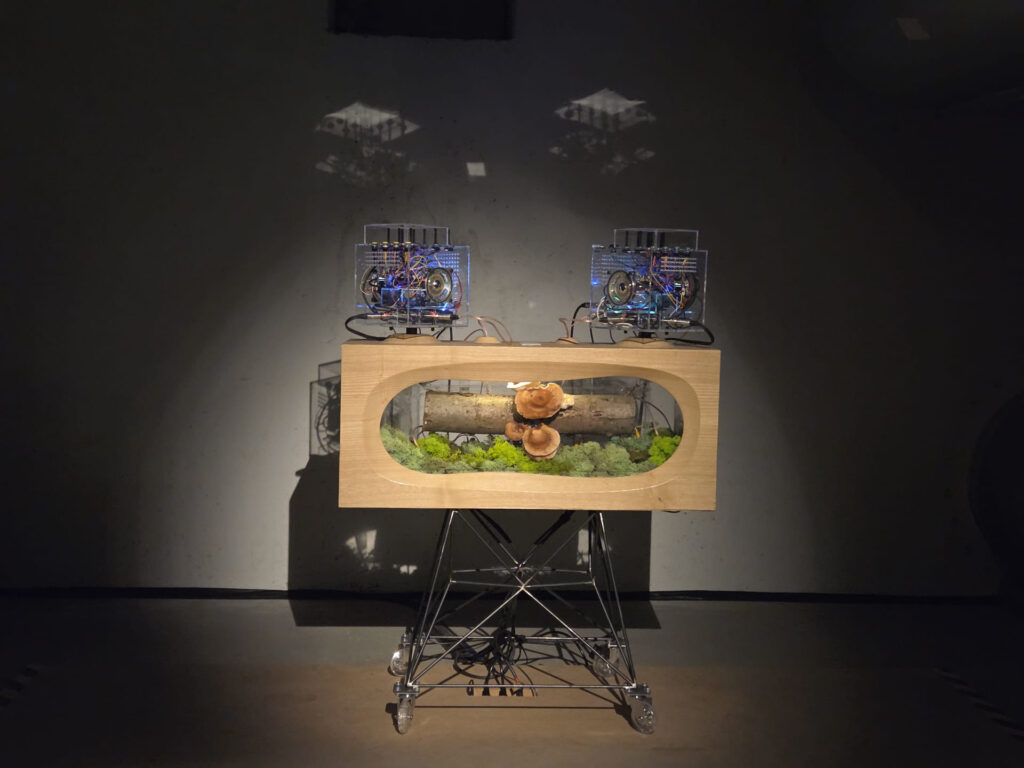
The Music of Mycelium
The sonic material is based on vocal interpretations by Coco Moya (vocalist of the band Menhir), inspired by the polyphonic compositions of the Baka pygmies from the Central African Republic. These voices are performed in meaningless syllables, designed to intertwine and participate in a generative song—similar to how hyphal tips tangle and swell with water from their environment to create mushrooms.
When the fungi generate electrical activity, they activate fragments of these vocal tracks, which accumulate and overlap gradually, creating a real-time polyphony that is, quite literally, the music of fungal metabolism. The deeper tones evoke the underground substrate ecosystem—the soil beneath our feet.
MYCOTUNE v.1.0: A Portable Biosonification Tool
The technical system, called MYCOTUNE v.1.0, has been designed not only as an installation piece but as a portable tool. Battery-powered and equipped with recording capabilities, it can be taken outdoors to create live biosonifications of other living organisms. A recording button generates CSV files with the received MIDI data, allowing documentation of sound sessions for later analysis or field work.
The installation also features eight accessible controls on each unit—master volume, footstep audio levels, sensitivity settings, granular playback duration, effects processing, and more—allowing real-time audio mixing sessions. This transforms the installation into a living musical instrument where fungi and humans collaborate as performers.
Ars Electronica 2025: International Recognition
The presentation of “Ritual Device for Fungal Humus” at Ars Electronica 2025, one of the world’s most important festivals for art, technology, and society, represents international recognition of the work being developed collectively in the field of bioart and interspecies communication.
The project demonstrates how art and technology can help us reconnect with non-human organisms, making visible—or rather, audible—the complex networks of life that sustain our planet.
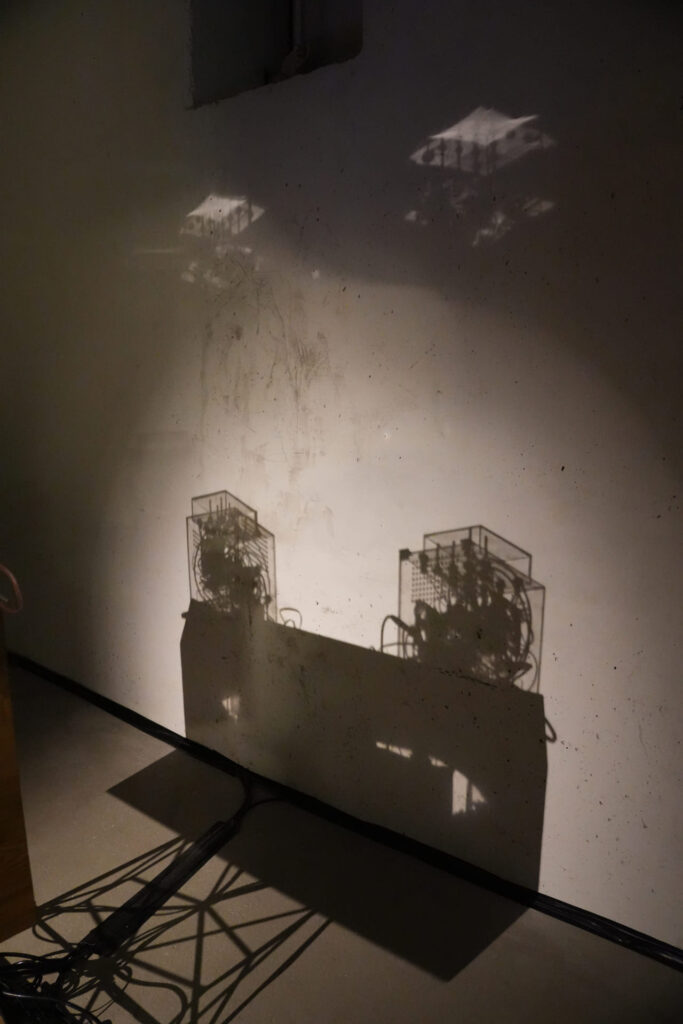
About the Artist and collaborators
Santiago Morilla: Visual and conceptual artist, author of the “Ritual Device for Fungal Humus” project.
Coco Moya (Menhir): Sound artist and vocalist, creator of the vocal compositions for the project.
Joaku de Sotavento (Joaquín Díaz, Mexico City, 1982): Artist, engineer, performer, and researcher. PhD in Research in Humanities, Arts, and Education. Regular collaborator on interactive art and technology projects.
Fernando Fernández – b1tdreamer: Founder and coordinator of MolinoLab, developer of technologies for bioart and interspecies communication.
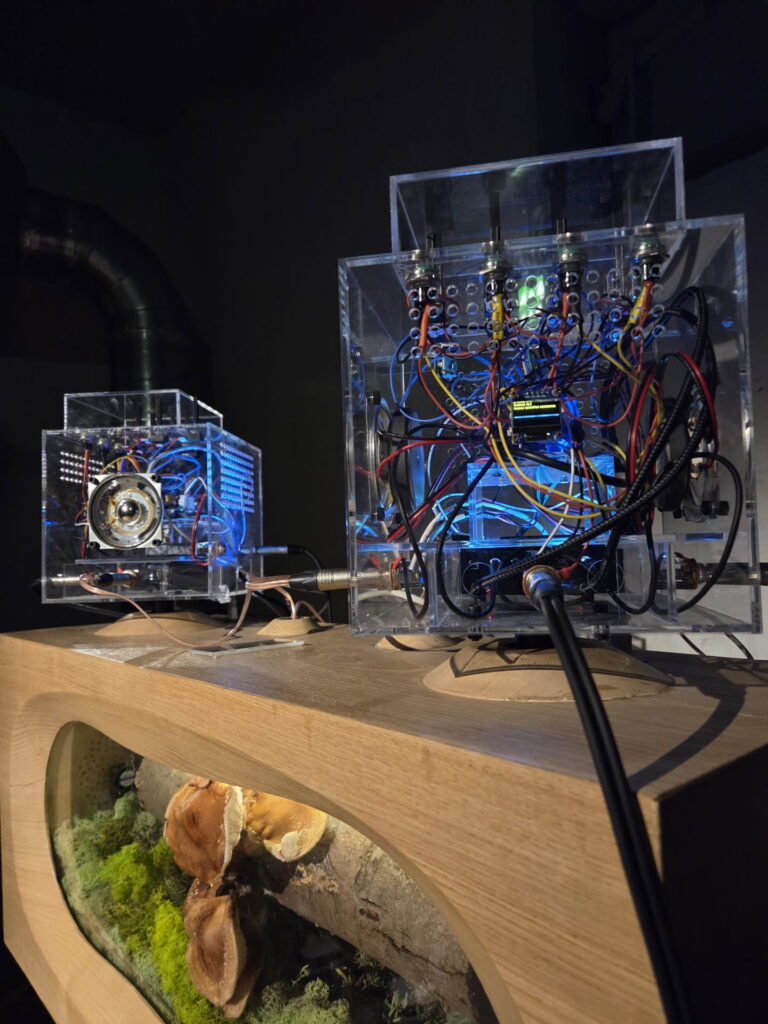
The Connection with Sinfonía Biótica
“Ritual Device for Fungal Humus” and Sinfonía Biótica explore complementary territories of interspecies communication:
While Sinfonía Biótica explores the aerial world of trees—their visible majesty, their canopies reaching toward the sky—through immersive virtual reality experiences, “Ritual Device for Fungal Humus” invites us into the underground world, the invisible realm of mycelium and saprophytic fungi that recycle organic matter.
Both projects share core values and technologies:
- Biodata Technology: Both projects use Biodata devices—open-source hardware based on Arduino ESP-32 that amplifies electrical signals from living beings and converts them into MIDI data. Originally developed by Sam Cusumano and produced under license in Europe by Joaku de Sotavento and Fernando Fernández (b1tdreamer), who are part of Sinfonía Biótica’s development team.
- Sonification as Translation: Both projects use sound as a language to translate interspecies communication—whether capturing electrical impulses from emblematic trees or monitoring the metabolic activity of shiitake mushrooms.
- Immersive Interactive Experiences: Both create environments where humans and other organisms collaborate to create unique audiovisual pieces.
- Open Data and Democratization: Both share the philosophy of creating open data platforms that allow other creators, artists, and scientists to develop their own projects from the collected biological information.
- Art and Technology for Reconnection: Both are convinced that art and technology can help us reconnect with non-human organisms.
- Earth as Complex System: Both envision Earth as a complex system of interspecies collaborations.
We are deeply inspired to see how the same technology we use to listen to trees can be applied to listen to fungi, and how different artists and teams are building an ecosystem of projects that, together, help us better understand the complexity and beauty of the networks of life that sustain our planet.
More Information


